Note: This publication is currently undergoing major revisions. The current publication will be replaced with a new publication based on stakeholder requirements and scientific advances. We expect to begin sharing details on this soon. If you have input on content, format, or publication frequency at any time, please contact us at cbrfc.webmasters@noaa.gov.Upper Colorado Water Supply Outlook, January 1, 2009Upper Colorado Water Supply Outlook, January 1, 2009
Contents
Upper Colorado Summary
After a somewhat dry start to the water year, December precipitation was much
above average in the Upper Colorado, Gunnison and Dolores basins. This brought
the seasonal precipitation to just above average in all basins and the January
1st snow water equivalent to much above average.
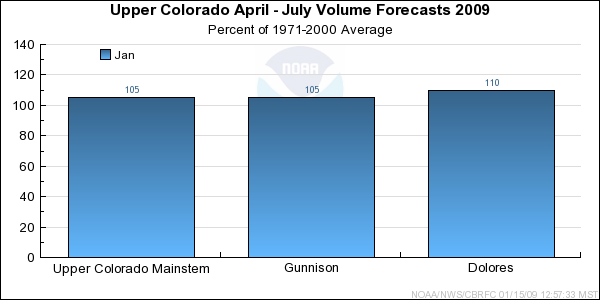
*Median of forecasts within each basin.
Upper Colorado Mainstem Basin Conditions
December precipitation was 170% of average in the Upper Colorado mainstem basin,
which made up for a rather dry start to water year 2009. As of January 1st, the
overall basin snow water equivalent was 125% of average. The snowpack is not
uniform across the basin; the areas on the northern side of the basin, bordering
the White and Yampa basins, have snow water equivalent percentages not quite as
high as those in the areas on the southern side of the basin, which border the
Gunnison basin. The Roaring Fork basin has the highest snow water equivalent
with over 140% of average. Model soil moisture was near normal heading into the
winter and December streamflow was also near normal. The April through July
streamflow forecasts range between 92% and 116% of average at this time.
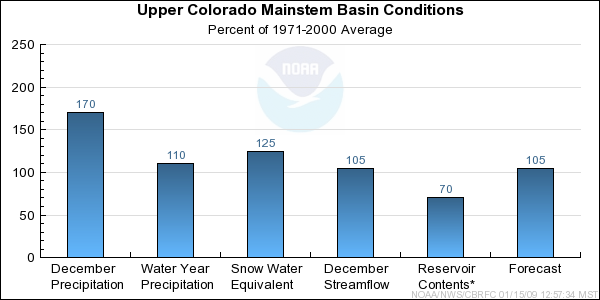
* Percent usable capacity, not percent average contents.
Click for multi-month Graph.
Gunnison Basin Conditions
-Model Soil Moisture/Observed Streamflow...Soil moisture for most of the upper basins in the Gunnison
was near to slightly below average in the fall. Observed streamflow for the month of December was near
average for the Gunnison.
-Snowpack/Precipitation...As of January 1st, snowpack across the Gunnison was 130 percent of average.
Precipitation over the Gunnison Basin for December was much above average with 210 percent. Seasonal
average precipitation for the Gunnison increased to 115 percent.
-Short Term Precipitation Forecast...The forecast models through next week keep the Gunnison Basin
relatively dry with near average temperatures.
-General Discussion...The current snowpack and statistical forecast suggest the April-July forecast of
105 to 110 percent of average. However, the ESP guidance suggests a forecast of near average due to
slightly lower than average soil moisture. The CPC guidance continues to show the possibility of
equal chances of above or below average precipitation for January through March across the Gunnison
Basin.
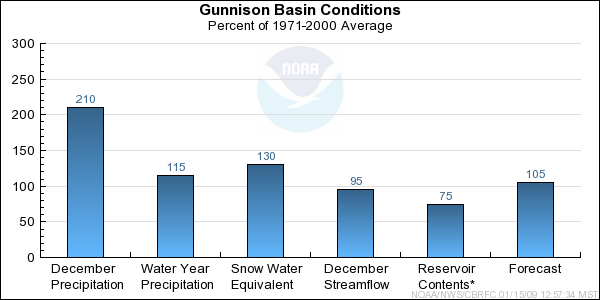
* Percent usable capacity, not percent average contents.
Click for multi-month Graph.
Dolores Basin Conditions
-Model Soil Moisture/Observed Streamflow...Soil moisture for most of the upper basins in the Dolores
were below average in the fall. This was most likely due to limited monsoonal precipitation during the
summer months. Observed streamflow for the month of December was mostly below average for the Dolores.
-Snowpack/Precipitation...As of January 1st, snowpack across the Dolores is currently 145 percent of
average. Precipitation over the Dolores Basin for December was much above average with 235 percent.
Seasonal average precipitation for the Dolores Basin increased to 115 percent.
-Short Term Precipitation Forecast...The forecast models through next week keep the Dolores Basin
relatively dry with near average temperatures.
-General Discussion...The current snowpack and statistical forecast suggest the April-July forecast of
115 to 120 percent of average. However, the ESP guidance suggests a forecast of around 110 percent of
average due to lower than average soil moisture. The CPC guidance continues to show a possibility of
below average precipitation for January through March across the Dolores Basin.
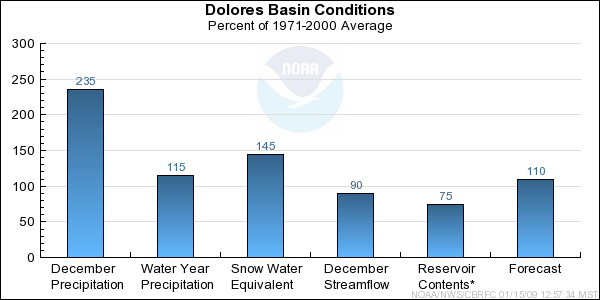
* Percent usable capacity, not percent average contents.
Click for multi-month Graph.
Differences between the full period forecasts and the residual forecasts may not exactly equal the actual observed volumes due to rounding conventions (see Definitions section).
Reservoir Monthly Inflow Forecasts
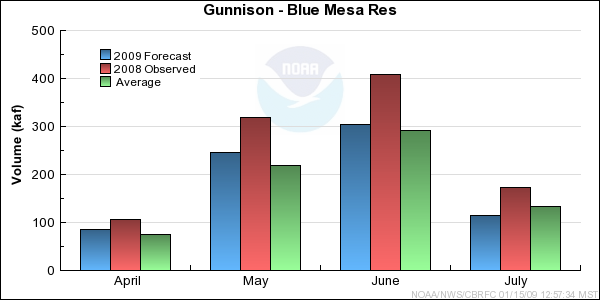
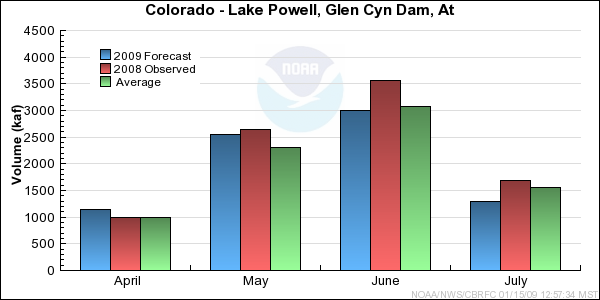
Monthly Streamflows
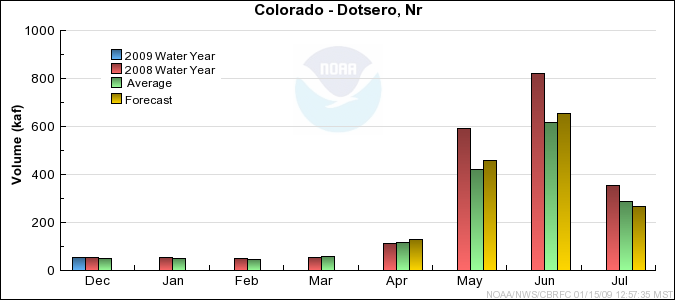
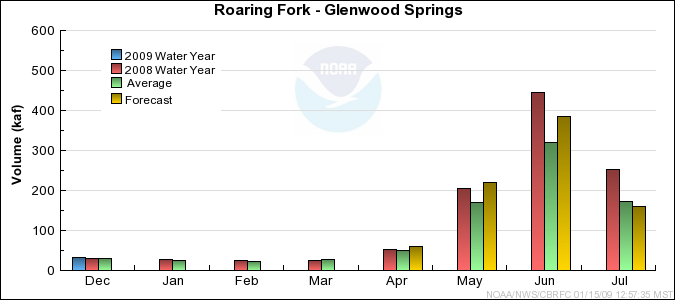
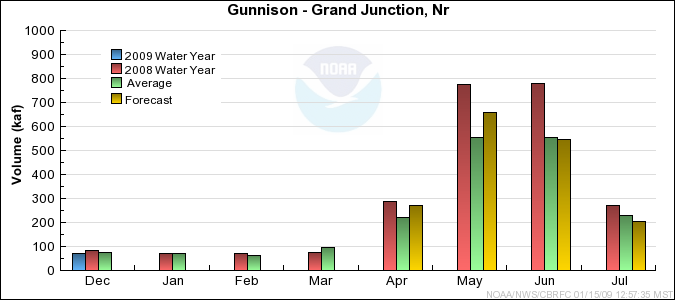
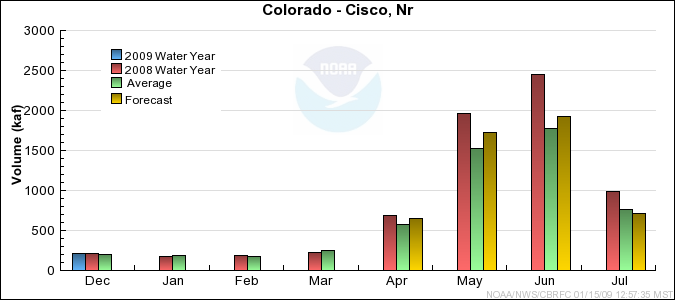
Precipitation Maps
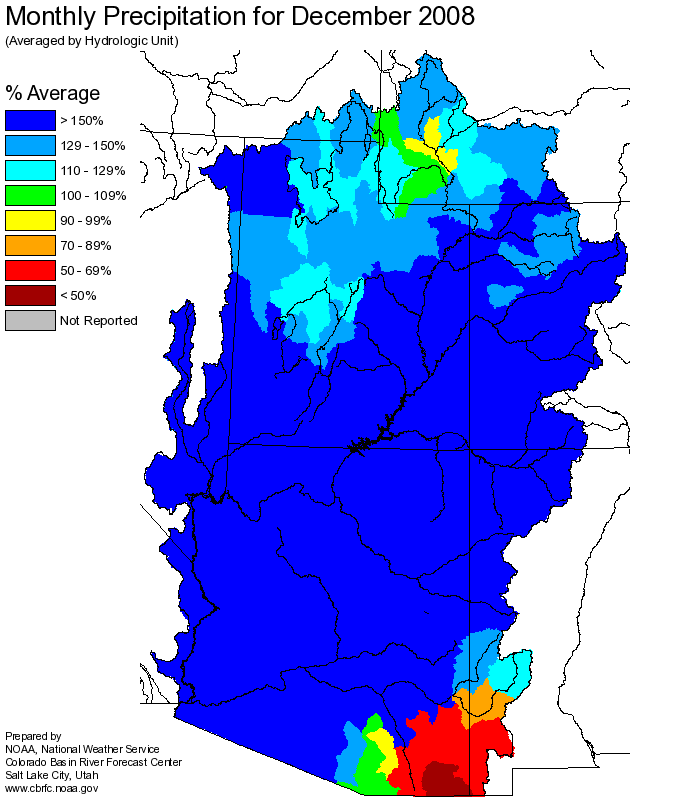
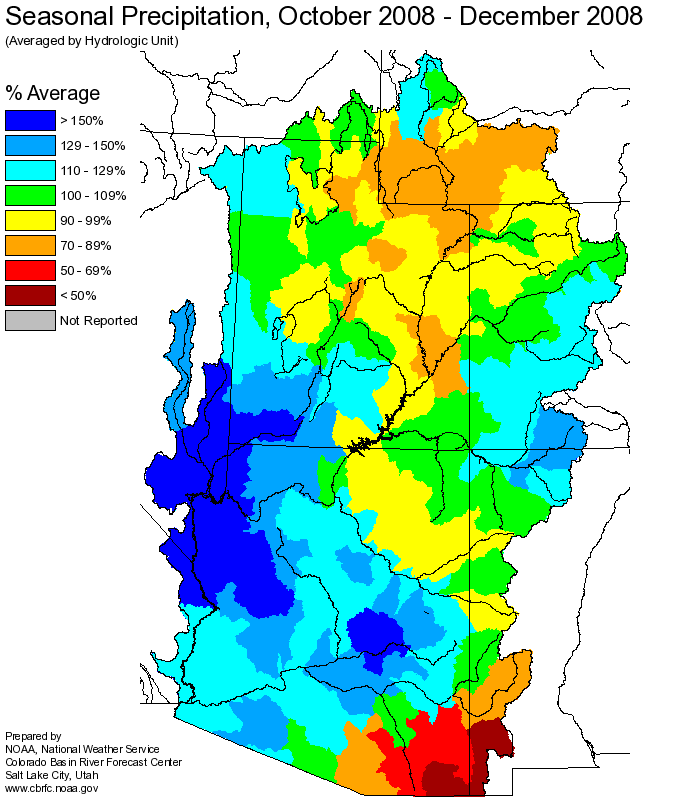
Hydrologist: Brenda Alcorn, Tracy Cox













